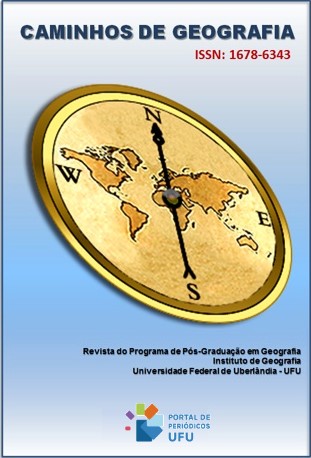GEOLOGIA E ANÁLISE HIDROGEOQUÍMICA DAS ÁGUAS SUBTERRÂNEAS DA BACIA DO RIO PARDO, SUL DO BRASIL: UM ESTUDO DE CASO
DOI:
https://doi.org/10.14393/RCG2510171428Palavras-chave:
Hidrogeologia, Hidroestratigrafia, Pré-sistema Aquífero Guarani, Sistema Aquífero Guarani, Sistema Aquífero Serra GeralResumo
As reservas de água subterrânea são fontes estratégicas para o abastecimento público. Este estudo regional com mapas geomorfológico, geológico e hidroestratigráfico destaca a importância das pesquisas estratigráficas e hidroquímicas na preservação da água em áreas suscetíveis à contaminação, como as zonas de recarga dos aquíferos. Os aquíferos foram subdivididos em Pré-Sistema Aquífero Guarani (PRE-SAG), Sistema Aquífero Guaraní (SAG) e Sistema Aquífero Serra Geral (SASG). O artigo analisa as características hidrogeológicas da bacia hidrográfica do rio Pardo, com foco nas unidades litostratigráficas do Grupo Rosário do Sul (PRE-SAG), Formação Botucatu (SAG) e fácies Caxias e Gramado da Formação Serra Geral (SASG), ocorrentes na área de estudo. Em termos hidrogeoquímicos para o Pré-SAG, as águas dos poços são classificadas como bicarbonatadas sódicas e para o SAG e SASG são bicarbonatadas cálcicas. A capacidade específica média de 102 poços analisados é de 0,72 m3/h/m para o Pré-SAG, 1,76 m3/h/m para o SAG e 0,44 m3/h/m para o SASG. O uso do banco de dados SIAGAS de domínio público é recomendado, mas requer validação e padronização adequadas. O estudo reforça uma abordagem sustentável para garantir a disponibilidade a longo prazo dos recursos hídricos subterrâneos na região.
Downloads
Downloads
Publicado
Edição
Seção
Licença
Copyright (c) 2024 Marco Antonio Fontoura Hansen, Henrique Carlos Fensterseifer, Cesar Augusto Moreira, Felipe Guadagnin, José Pedro Rebés Lima

Este trabalho está licenciado sob uma licença Creative Commons Attribution-NonCommercial-NoDerivatives 4.0 International License.
Autores que publicam nesta revista concordam com os seguintes termos: a) Autores mantém os direitos autorais e concedem à revista o direito de primeira publicação, com o trabalho licenciado sob a Creative Commons Atribuição-NãoComercial-SemDerivações 4.0 Internacional. b) Autores têm permissão e são estimulados a publicar e distribuir seu trabalho online (ex.: em repositórios institucionais ou na sua página pessoal), já que isso pode gerar alterações produtivas, bem como aumentar o impacto e a citação do trabalho publicado. c) Em virtude de aparecerem nesta revista de acesso público, os artigos são de uso gratuito, com atribuições próprias, em aplicações educacionais e não-comerciais.











